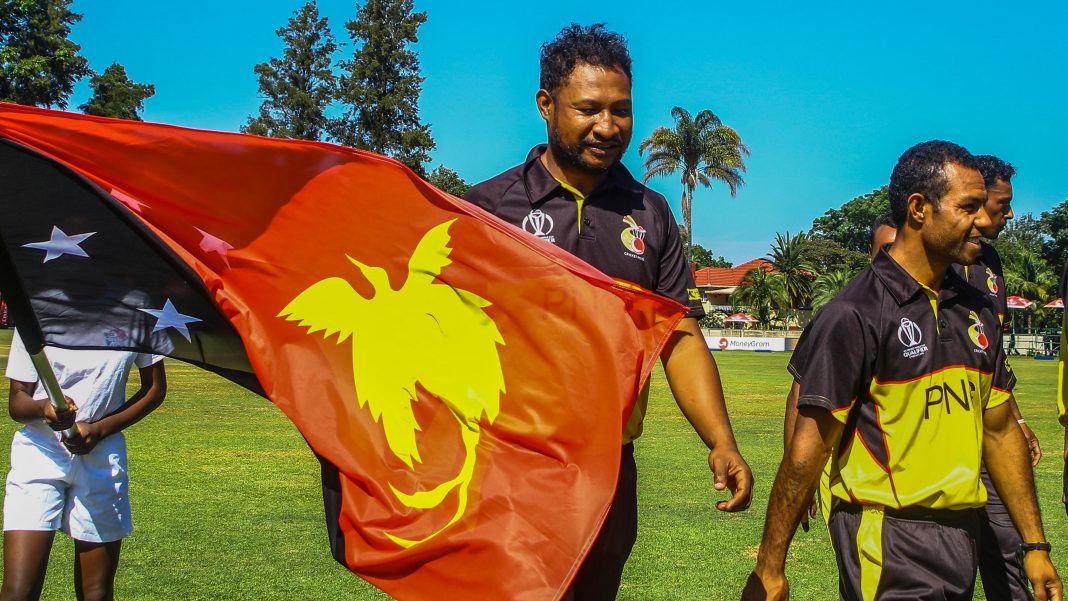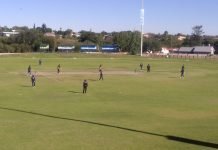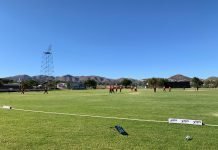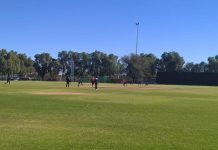Just over a year ago, Papua New Guinea and Hong Kong faced off for the 4000th ODI. With both sides already relegated to WCL2 (and stripped of the ODI status they’d gained at the 2014 qualifier), two teams of dead men walked onto the field at Old Hararians; despite cricket’s near-obsessive love of round numbers, it was played with little fanfare and even less consequence. An answer to a trivia question rather than a celebration of the format. PNG ultimately won that encounter, but 9th place was an ignominious end to their first foray into ODI cricket and showed a certain stagnation after they’d waltzed onto the stage 4 years ago with so much potential.
Already starved of fixtures, even with status, PNG looked to be facing years in the international wilderness until the announcement of the new ODI qualification pathway. With it came a lifeline to the top flight, and the tantalising prospect of 36 guaranteed ODIs over the next 2 years – 50% more than PNG played over their four years with “status”.
One of the best-run Associates administratively, PNG are a shining light for grassroots development off the field, with an impressive ground-up programme reflected in their impressive participation numbers on the ICC census, and a recent deal with the Australian government and ICC to build 48 new cricket pitches in rural areas around the nation highlights their commitment to growing the game. A top-four finish in Namibia will help build the heroes that inspire the next generation in one of cricket fastest-growing outposts.
On the field, skipper Assad Vala has moulded a settled side with fierce commitment to each other and the team; their stable lineup and tight discipline makes PNG one of the favourites to regain their place at the ODI table. Vala himself remains a talisman for the Barramundis; a classy left-handed batsman at home opening or at number 3, and a wily off-spin bowler, both of his skills will come to the fore in Windhoek. Dominant throughout PNG’s untroubled T20WC qualification from the East Asia Pacific region, Vala will need to step up his game against the higher standard of opposition on display. He certainly has the technique to negotiate the sluggish pitches in Windhoek, and his impressive record in the Intercontinental Cup (including centuries against the strong bowling units of Ireland and Afghanistan) shows he has the temperament for long stints at the crease as well as the shots to score quickly.
One batsman with an insatiable appetite for destruction is the spectacular Tony Ura. A bright spot amongst PNG’s disappointing CWCQ campaign, Ura blasted one of the knocks of the tournament with 151 against Ireland (only Calum MacLeod’s Rashid-taming masterpiece against Afghanistan was a better display of individual prowess). On that day he was irresistible, but the fact he failed to pass 50 in the rest of the tournament speaks to his inconsistency; the fact that nobody else scored more than 25 speaks to PNG’s worrying propensity to lose wickets in clusters. Ura appears to have been working on his consistency, pummelling runs in bulk and at an eye-watering speed at EAP level, and Vala has tipped him as one to watch. Questions linger about his team’s ability to support him if he gets going though, with pressure on the skipper to provide stability.
Another frustratingly inconsistent match-winner is Lega Siaka. Tipped for big things after a breakout performance in the 2014 CWCQ (where he helped PNG obtain ODI status with 2 rapid centuries), as well as a scintillating 109 in PNG’s second-ever ODI, Siaka has since stagnated, struggling for runs and floating in and out of the team. The fact that his average barely touches double figures in the 14 ODIs he played since that knock (against who else but Hong Kong) is a wretched return for any player, but an absolute dereliction of duty for one as abundantly gifted as Siaka. To watch him bat is to be reminded of Mark Waugh’s aesthetically pure strokeplay and timing – but also Waugh’s infamous lack of discipline as Siaka frequently throws away starts with sloppy dismissals. Despite starting his career as an opener, Siaka seems to be settling into his new role in the lower middle order, where he last year smashed an astonishing 188* against old foes Hong Kong to drag PNG from 134/6 to 341/9 in their (statusless) 50-over clash in Port Moresby. Both teammates and spectators will be hoping for that side of Siaka to resurface in Windhoek because in full flow he is among the best batsmen to watch in Associate cricket (or indeed any cricket). While Siaka’s batting has often disappointed, his bowling has been significantly improved, with hard work paying off as his legspin has developed into a genuine threat. This was apparent at the EAP final last month, where he topped PNG’s wicket tally with 7 victims from 3 outings with the ball. With the Windhoek pitches favouring spin, Siaka presents another handy option for Vala, who can already call upon his own offspin, as well as bowling allrounder CJ Amini.
Another legspinner, Amini can offer flexibility between wicket-taking ability and containment. Capable of deceptive flight and fizzing turn, his temperament will be the biggest concern for PNG – he has a tendency to baulk and flatten out his trajectory in order to put a lid on the scoring rate when batsmen look to be getting on top. With pace bowlers tipped to be less effective in Windhoek, PNG will look to Amini supply them with breakthroughs; to do this he will need to hold his nerve and bowl aggressively rather than resorting to defence. With the bat though, Amini is anything but defensive. In his two previous outings during PNG’s regional T20 qualification he blasted 245 runs at a strike rate of well over 150, and while the tempo will be a little slower in the 50-over matches at WCL2, his big hitting will be an important cog in PNG’s deep batting order. While the spin contingent will be key, PNG’s pace bowling stocks will also look to provide reliable support with both bat and ball – pacer Norman Vanua has recently been promoted to open the batting and has found success so far in T20 as a Sunil Narine-like pinch hitter. While he may not open in the longer format, he could be effectively deployed as a floating hitter to turbocharge the run rate as required. Overshadowed of late by his newfound batting role, Vanua’s bowling has been rather anonymous. At his best a nagging seamer capable of outthinking his opponents, rather than an out-and-out fast bowler, Vanua possesses the game to make a telling contribution even though conditions are not ideal.
Chad Soper, a springy right-arm opener, is another who will need to rely on guile more than speed. Playing most of his cricket in the Australian grade system’s typically bouncier tracks, his relentless accuracy will serve him well on the slower decks at Wanderers, Affies and United. The stingiest by some margin throughout PNG’s regional qualification with an economy rate hovering around 5 (in T20 cricket), Soper’s ability to stifle the scoring makes him a key part of PNG’s bowling arsenal. Batting at number 8, he can also provide cover for the top order with a solid defensive technique allied with the power to find the rope when necessary.
Settled as they are, PNG is unlikely to tinker too much with the side that saw them through regional qualification, though the return of Nosaina Pokhana after being banned for an illegal action last year does give them the option to draft in another useful seamer if pitches end up being less sluggish than expected.







